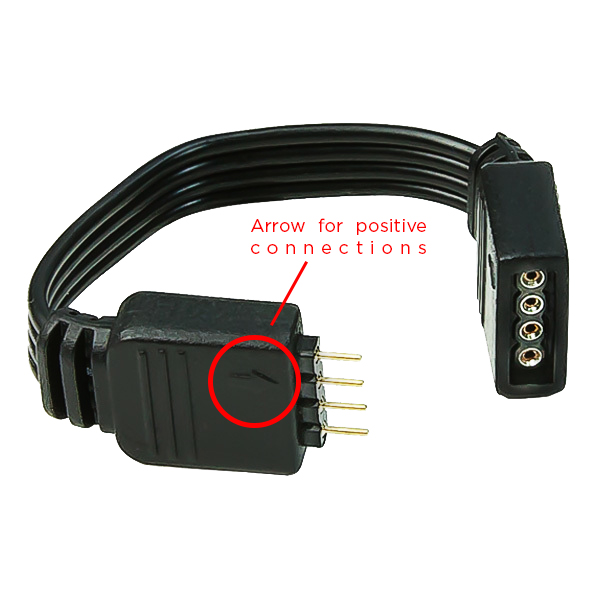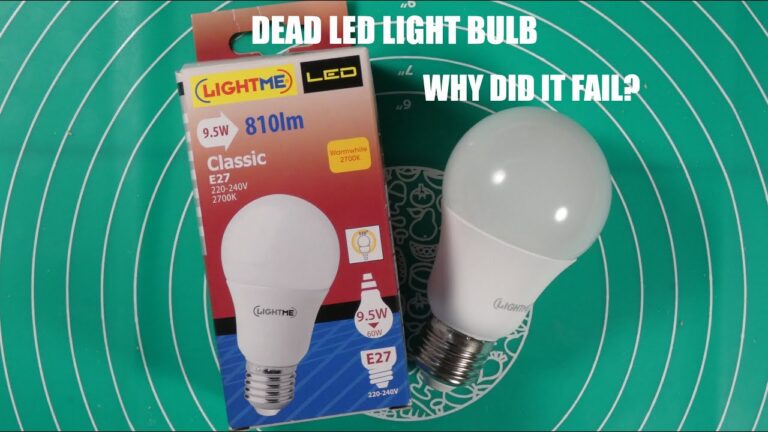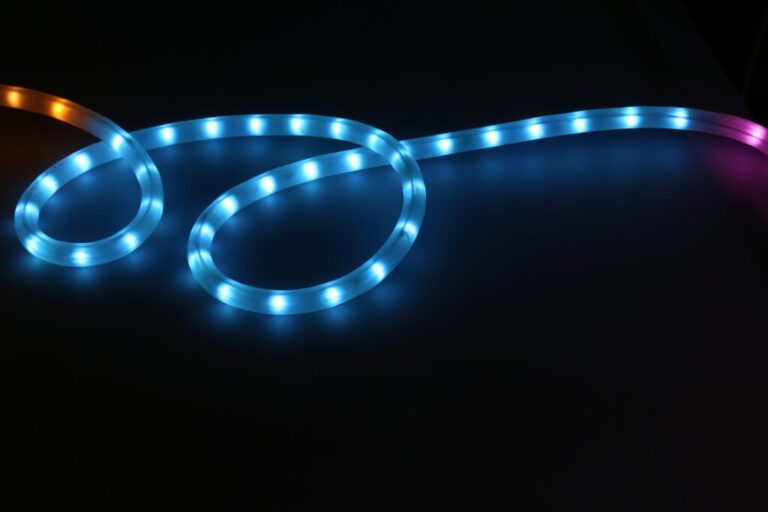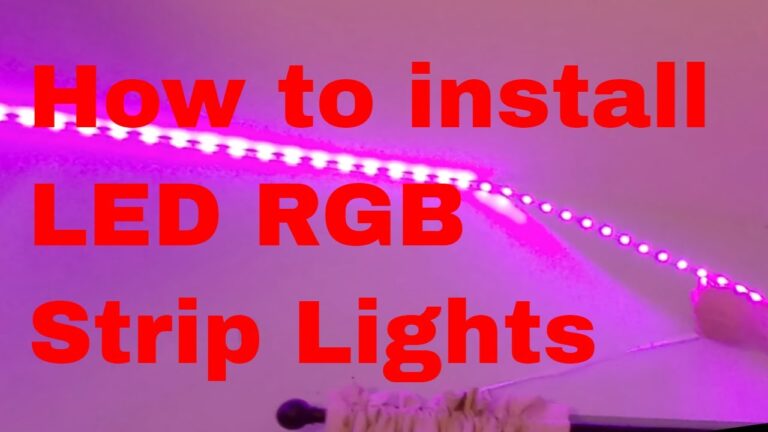Common Problems With Led Lighting
If you’re considering making the switch to LED lighting, it’s important to be aware of some of the common problems that can occur. While LED lights are more energy-efficient and longer-lasting than traditional incandescent bulbs, they can also be more finicky and may require different types of fixtures. Here are some of the most common problems with LED lighting:
1. Flickering or Strobing
One of the most frustrating things about LED lights is that they can sometimes flicker or strobe, even when they’re new. This problem is usually caused by an incompatible dimmer switch or a faulty connection in the fixture itself.
If your LEDs are flickering, try replacing the dimmer switch with one that’s specifically designed for use with LEDs. If that doesn’t solve the problem, you may need to replace the entire light fixture.
2. Poor Color Quality
Another common complaint about LED lights is that they often have poor color quality, appearing either too blue or too yellow. This is due to the way that different types of LEDs emit light; some emit more blue light than others. To get around this problem, look for “warm white” LEDs which emit a softer, more natural light.
You can also buy special color-correcting filters that attach to your existing light fixtures and help improve the color quality of your LEDs.
One of the most common problems with LED lighting is flickering. This can be caused by a variety of factors, including loose connections, incorrect drivers, or damaged bulbs. Sometimes, simply replacing the bulb or driver can fix the problem.
Other times, more extensive repairs may be necessary.
Another common issue is poor color rendering. This means that colors may appear muted or washed out when viewed under LED lights.
This is usually due to the fact that LEDs emit a narrow range of wavelengths, which can make some colors difficult to distinguish. However, there are now many different types of LEDs available that offer better color rendering than ever before.
Finally, one other common problem with LED lighting is called the “blue glow” effect.
This occurs when an area appears to have a bluish tint when lit by LEDs. It’s caused by the way LEDs emit light – blue light waves are shorter than other colors and scatter more easily in all directions. The best way to avoid this problem is to choose LEDs with a higher color temperature (which emits less blue light) or use diffusers and reflectors to help disperse the light more evenly.
What Causes an Led Light to Stop Working?
An LED light can stop working for a variety of reasons. The most common reason is that the driver circuit has failed. This can be due to a number of factors, including:
-A manufacturing defect in the LED itself
-A problem with the power supply (usually an issue with the AC/DC converter)
-A problem with the control circuitry (a blown fuse, for example)
Can Led Lights Malfunction?
Yes, LED lights can malfunction. A few things that can cause an LED light to malfunction are if the power supply is not providing enough current, the wrong type of resistor is used, or the LEDs are not getting cooled properly.
What is the Major Disadvantage of Led Lights?
The major disadvantage of LED lights is that they are more expensive than traditional incandescent bulbs. LEDs also require more energy to produce, so they may not be as efficient in the long run.

Credit: recessedlightspro.com
Common Problems With Led Strip Lighting
If you’re considering LED strip lighting for your home, it’s important to be aware of some common problems that can occur. Here are four potential issues to watch out for:
1. Poorly made LEDs can flicker or produce a strobing effect.
This is often caused by incorrect current or voltage levels, which can damage the LEDs and cause them to fail prematurely.
2.LEDs produce heat, and if they’re not properly cooled, this heat can build up and damage the strips. Make sure your strips are mounted in a way that allows for proper ventilation.
3.Water and moisture can also damage LED strips, so avoid installing them in areas where they’ll be exposed to the elements.
4.Finally, some people find that LED strip lights produce an annoying buzzing sound.
Led Ceiling Light Not Working
If you have a led ceiling light that is not working, there are a few things that you can do in order to troubleshoot the issue. First, check to make sure that the light bulb is properly screwed in. If it is, then next check the power supply to the light.
Make sure that the switch is turned on and that there is power running to the outlet. If all of these things are fine, then the issue may be with the light itself. You can try replacing the light bulb or checking the connections within the light fixture.
Led Light Suddenly Dim
If you notice that your LED light is suddenly dim, there are a few possible causes. First, check to make sure that the light is properly plugged in and that the switch is turned on. If the light is still dim, it may be due to a loose connection or a problem with the power source.
If you’re using batteries, try replacing them with fresh ones. If the issue persists, it’s likely that the LED bulb itself is defective and will need to be replaced.
How to Repair Led Ceiling Light
If your LED ceiling light has stopped working, there are a few things you can try to repair it. First, check the power source to make sure the light is getting power. Next, check the connections to make sure they are tight and secure.
Finally, check the bulb to see if it needs to be replaced. If none of these solutions work, you may need to purchase a new LED ceiling light.
Health Problems With Led Lights
There are many health problems that can be caused by LED lights. One of the most common is headaches. This is because the light from LEDs can be very bright and intense, which can lead to headaches for some people.
Additionally, some people may also experience eye strain and fatigue from looking at LED lights for too long.
Another common health problem associated with LED lights is seizures. This is because the flashing of LED lights can trigger seizures in some people who are susceptible to them.
If you or someone you know has a seizure disorder, it is important to avoid exposure to LED lights as much as possible.
Finally, some research has suggested that exposure to blue light from LEDs can contribute to the development of macular degeneration, a condition that leads to blindness. While more research is needed on this topic, it is something that should be considered if you are regularly exposed to LED lights.
Led Light Turns on Then off Immediately
When you turn on an LED light, you expect it to stay on. But sometimes, LED lights turn on for a second and then turn back off again. This can be frustrating, especially if you’re trying to use the light to do something specific.
There are a few reasons why this might happen. One possibility is that the battery is low. If the battery isn’t providing enough power to keep the light on, it will turn off automatically.
Another possibility is that there’s something wrong with the connection between the battery and the light. Make sure that the contacts are clean and secure.
If your LED light keeps turning off and on, try these troubleshooting tips.
With a little patience, you should be able to get it working properly again.
Problems With Led Lights Flickering
If you’re having problems with your LED lights flickering, there are a few things that could be causing the issue. Here’s a look at some of the most common problems and how to fix them.
One of the most common causes of flickering LED lights is an improper connection between the fixture and the power source.
If your LEDs are connected to an AC power source, they will flicker when there is a drop in voltage. This can be caused by loose connections, bad wiring, or faulty transformers. To fix this problem, make sure all connections are tight and secure, and check for any damaged wiring.
If you’re using a transformer, make sure it’s properly rated for LED lights.
Another common cause of flickering LED lights is dirty or damaged light fixtures. If your light fixtures are dusty or dirty, it can block some of the light from reaching the lens, which can cause flickering.
To clean your light fixtures, simply wipe them down with a damp cloth or use compressed air to blow out any dirt or dust. You should also check for any damage to the fixture itself, such as cracks in the housing or damaged lenses.
Finally, another possible cause of flickering LED lights is incompatible dimmer switches.
Some dimmer switches are not compatible with LEDs and can cause them to flicker when used together. To avoid this problem, make sure you buy a dimmer switch that is specifically designed for use with LEDs.
Led Light Not Working But Has Power
If your LED light is not working but has power, there are a few things you can check to try and troubleshoot the issue. First, make sure that the light is properly plugged in. If it is, then check the switch or dimmer that controls the light to make sure it is turned on.
If the light is still not working, you may need to replace the bulb.
Conclusion
If you’re thinking about switching to LED lighting, there are a few things you should know first. LEDs are more expensive than traditional light bulbs, so you’ll need to factor that into your budget. They also require different fixtures, so you may need to do some remodeling to accommodate them.
Additionally, LEDs produce a lot of heat, so be sure to keep them away from flammable materials. With proper planning and preparation, however, making the switch to LED lighting can be a great way to save energy and money in the long run.





